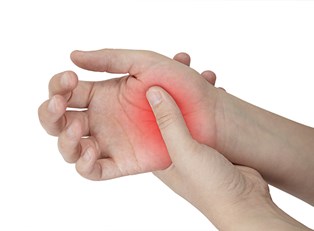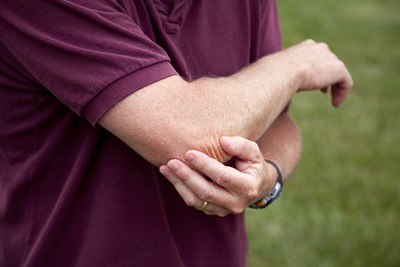Rheumatoid arthritis is a chronic, systemic inflammatory disorder that typically affects joints in the hands and feet. Unlike osteoarthritis, which causes damage and degeneration strictly to joint cartilage, rheumatoid arthritis affects the joint lining, resulting in painful swelling, bone erosion, and in severe cases joint deformity.
Rheumatoid arthritis is an autoimmune disorder, which means a body's immune system mistakenly attacks its own tissues. This typically happens on both sides of the body (both hands, wrists, and/or knees), and this symmetry helps distinguish rheumatoid from other types of arthritis. In addition to joints, it is possible for rheumatoid arthritis to affect other parts of the body, including the skin, eyes, lungs, heart, blood, and nerves. Approximately 1% of the world's population suffers the condition. It is three times more common in women than men and generally develops between ages 40 and 60.
Rheumatoid Arthritis Causes
All of the rheumatoid arthritis causes are not completely known. For example, experts know that genes play a role, but their involvement in the cause is still unclear. The disease does not appear to run in the family, but one or more genes may increase the likelihood that the body's immune system will eventually attack the joint tissues. This immune response may also be caused by bacteria, viruses, or another foreign substance; however, no infection or organism has been identified as the root cause. Whatever the cause, cells called lymphocytes react, causing the release of cytokines, which are chemical messengers that trigger more inflammation.
There are many cytokines or inflammatory mediators, but the most important in rheumatoid arthritis causes are tumor necrosis factor (TNF) and interleukin-1. These are thought to trigger the process of joint damage. The specific joint tissue being attacked is called the synovium, or synovial membrane, which is the soft tissue lining the non-cartilaginous surfaces within joints with cavities. When inflammation thickens the synovium, it can eventually lead to cartilage, bone, and joint damage. The tendons and ligaments then weaken and stretch, and eventually the joint loses its shape and alignment.
Rheumatoid Arthritis Treatments
Rheumatoid arthritis treatment can take on many forms. There is no cure, but treatments including medications, rest, exercise, and surgery can relieve the symptoms and slow the degenerative process. The type of treatment depends on a person's age, current health, health history, and severity of arthritis. Over-the-counter drugs, both pills (aspirin, ibuprofen, naproxen) and topical creams applied directly to the skin, are available to help relieve joint pain and reduce swelling and stiffness. In severe cases, physicians may recommend strong medication, such as pain relievers or corticosteroids. Additionally, many strong medications, called disease-modifying antirheumatic drugs (DMARDs), treat rheumatoid arthritis by interfering with the immune system's attack on the joint tissue.
There are also lifestyle modifications a person can make in order to slow the process or reduce the risk of developing rheumatoid arthritis. For example, occupational and physical therapy can protect the joints. Using specially designed gripping and grabbing tools for everyday tasks, and a cane when walking may also help.
Smoking cigarettes increases the risk of developing the disease, but quitting can reduce that risk. Finally, a balance of rest and exercise is important to any rheumatoid arthritis treatment. Rest enflamed joints, and learn how best to strengthen the surrounding muscles during remission.



